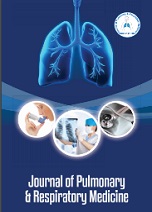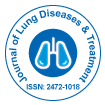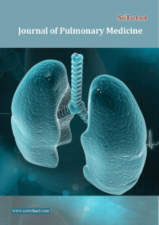Dear Potential Researchers, Scientists, Industrialists & Students,
Join us for 10th International Conference on Chronic Obstructive Pulmonary Disease
Update your skills, Meet your academic heroes, Engage in high-level debates and refine your ideas enhance your knowledge base, and broaden your horizons, Visit a new place and have fun, - all in one place!
Date: October 26-27, 2020
Venue: Cape Town, South Africa
If you are interested to be a part of this event as a speaker or delegate!
Email: connect@memeetings.com
Call: 1-201-380-5561 (Extension No- 7005)
WhatsApp: +44 7723584560
ME Conferences invites all the participants from all over the world to attend 10th International Conference on Chronic Obstructive Pulmonary Disease during October 26-27, 2020 at Cape Town, South Africa. This meeting deals with the advanced research technologies in the field of pulmonology and also about the new treatment approaches which are formulated by scientists to treat numerous diseases in an easier method which includes encouraging keynote presentation, Oral speech, Poster presentations, Exhibitions.
The main theme of the conference is “Scrutinizing the challenges and developing novel approaches for COPD treatment”. This would be a two days conference which prompts the minds of attendees.
Why to attend?
International Conference on Chronic Obstructive Pulmonary Disease aims to bring together globally distinguished academics in the field of Pulmonologists, Pulmonary specialists, Respiratory specialist, Chest medicine specialist, paediatric pulmonologists, Public Health professionals, Scientists, Academic scientists, Researchers, Intellectuals, to exchange about state of the art Research and Technologies and to bring discoveries of cancer to Patients. To understand the current state of research and the challenges to future discovery.
Target Audience:
-
Directors/CEO & Research Scientists
-
Pulmonologists, Respiratory Therapists
-
Lung and respiratory Researchers
-
Pulmonology Faculty and Students
-
Lung and Respiratory Associations and Societies
-
Business Entrepreneurs
-
Thoracic surgeons, Radiologists
-
Medical and Nursing Students, Professors
-
Pharmaceutical companies
-
Manufacturing Medical Devices Companies
-
Paediatric pulmonologists
Chronic obstructive pulmonary disease (COPD) causes when there is long term exposure to irritants that damage your lungs and airways. It comprises chronic bronchitis and emphysema. Emphysema is a disease of alveoli, making the alveoli lose its elasticity and Chronic Bronchitis is a condition where the Inflammation in the bronchial tube takes place .COPD is an abiding lung disease that makes one hard to breathe. COPD is a prevalent condition which mainly affects adults who smoke. Breathing in smoke and the chemicals can damage the airways and air sacs.
Respiratory Diseases are pathological conditions affecting the organs and tissues that make gas (Oxygen and Carbon dioxide) exchange difficult in respiration. Common respiratory diseases are Chronic obstructive pulmonary disease, Asthma, Pneumonia, Bronchitis, Cystic Fibrosis, Tuberculosis. Among all the respiratory diseases, about 65 million people suffer from chronic obstructive pulmonary disease (COPD).
Cancer is a disease where in the cells of the body grow out of control. When cancer observed in the lungs, it is called lung cancer. Lung cancers usually are categorized into two main types called small cell and non-small cell. These two types of lung cancer grow differently and are treated differently. Non-small cell lung cancer is more prominent than small cell lung cancer The recommended screening test for lung cancer is low-dose computed tomography
Asthma is a long-term problem in the tubes that carry air into the lungs that can make it hard to breathe. The airways get narrow , so air cannot move easily. It can source serious wheezing and breathlessness, known as asthma attacks. Peak flow score will give a sign warn that an asthma attack might happen soon. Most people can control their symptoms. Asthmatic patient need to take medicine every day to prevent asthma attacks.
Pulmonary Infectious diseases occur when the lungs are infected with bacteria, virus, or fungus. Some types of Chronic Pulmonary Infections are Tuberculosis, Pneumonia, Histoplasmosis, Pleural Effusion, Pulmonary infections are treatable, particularly when diagnosed early. Many other infections or diseases may also mimic these infections Fevers for more than a week Cough for more than three weeks, Swollen lymph nodes (glands) in your neck, Coughing up blood.
The histology of pathologic descriptions of the lung disease that is now known as COPD. It describes the pathology and the description of emphysema and its diversity from tuberculosis The diseases that lead to COPD include emphysema, chronic bronchitis, and refractory asthma. All of these has different effects on the lungs and respiratory system. It is a progressive condition, where in the meaning that it gets worse over time.
Smoking remains the most prominent risk factor for COPD in world, other risk factors, including genetic factors and occupational or environmental exposures, remain important. COPD remains a grave public health problem that is regularly underdiagnosed, particularly in its early stages. The respiratory indications of cough and phlegm amplified with existing smoking and age among both in men and women
Chronic inflammation and immune responses play a vital roles in the development and advancement of COPD. The role in the NLRP3 inflammasome in the airway inflammation is observed in COPD. The exposure to cigarette smoke, toxic particles and gases will activate an inflammatory response in the airways occasioning in the production of a number of potent cytokines and chemokines which play a major role in the stimulation of chronic inflammation and consequent tissue devastation
There are many factors can contribute to the occurrence of COPD. Despite the fact cigarette smoking is the number one risk factor in the progression of COPD, recent research has pointed to the concept that genes also play a significant role. A small but vital segment of COPD cases anchorage a major genetic determinant, α1-antitrypsin deficiency (AATD). Intravenous administration with AAT protein is a commonly used treatment for severe AATD in COPD patients.
Paediatric respiratory medicine is a multidisciplinary subspecialty in the specialty of paediatrics, which involves doctors, nurses, respiratory physiologists, physiotherapists, the child. The major reason Paediatric pulmonology is arose relatively late as a specialty of paediatrics is because respiratory problems were so common in the children that all paediatricians were estimated to be specialists in their diagnosis, treatment and management. The majority of paediatric respiratory illnesses are mild and has resolution on their own or respond to treatment given in primary care.
Heart failure is often caused by high blood pressure or coronary artery disease. It’s often directly related to COPD. The two conditions may influence each other. Low oxygen in the blood from COPD may put extra strain on the heart, which worsens heart failure. The too much fluid in your lungs from heart failure can make breathing even harder if you have COPD.
The first and most important thing to be followed is to quit smoking. Treatment can reduce symptoms, prevent impediments, and generally slow down the disease progression. Medication through the Bronchodilators helps in relaxation of the muscles of the airways Glucocorticosteroids can be added to reduce inflammation in the airways. Although there is medication for COPD but permanent cure is still on research.
Pulmonary medicine is the branch of medicine that compacts with the causes, diagnosis, prevention and treatment of diseases affecting the lungs. Pulmonary medicine deals with many diseases, such as: ARDS (acute respiratory distress syndrome), asthma, COPD (chronic obstructive pulmonary disease), cystic fibrosis, interstitial lung disease, lung cancer, lung transplants, occupational lung disease, pulmonary hypertension, pulmonary tuberculosis, and SARS (severe acute respiratory syndrome).
According to the Center for Disease Control and Prevention (CDC) the finest way to prevent getting COPD is to abandon smoking. Mark the environment free from secondhand smoke. The aim of COPD treatment is to dismiss symptoms, slow the deterioration of lung function, decrease exacerbations, and improve quality of life. Pulmonary rehabilitation can progress the well being with special exercises, psychological counselling , COPD education
Pulmonary embolism is the formation of blood clot that occurs in the lungs. It can harm portion of the lung due to restricted blood flow, reduced oxygen levels in the blood, and affect other organs also. Large or multiple blood clots can be lethal. The blockage can be deadly. Pulmonary embolism results in the death of one-third of people who are undiagnosed or untreated. The instant emergency treatment significantly increases your chances of avoiding permanent lung damage.
Track 16: Pulmonary Hypertension
The alternative name of Pulmonary hypertension is pulmonary arterial hypertension (PAH). Pulmonary hypertension arises when the pressure in the blood vessels that carry the blood from heart to lungs is higher than normal level . Pulmonary hypertension can also happen on its own or it can be caused by additional disease or condition. It shows the symptoms such as shortness of breath, chest pain, and lightheadedness. If the patients are left untreated life-threatening complications like heart failure or arrhythmias can occur
Developments in Lung-Volume-Reduction Surgery (LVRS) and lung transplantation offers the COPD patients improved quality of life to the patients with advanced chronic obstructive pulmonary disease treatment. Currently the number of surgical procedures improved at an almost exponential rate. The operations were done through a median sternotomy and engaged a linear stapling device fitted with the strips of bovine pericardium to minimize the air leakage through the staple holes.
Patients unt​reated for COPD are prone to complications. Common complications include lung infections, Pneumothorax, Heart Problem, Poor Gas Exchange Osteoporosis, Weight Issues, Sleep Problems, Weak Arms and Legs, Diabetes, Depression and Anxiety and many other complications are observed.






